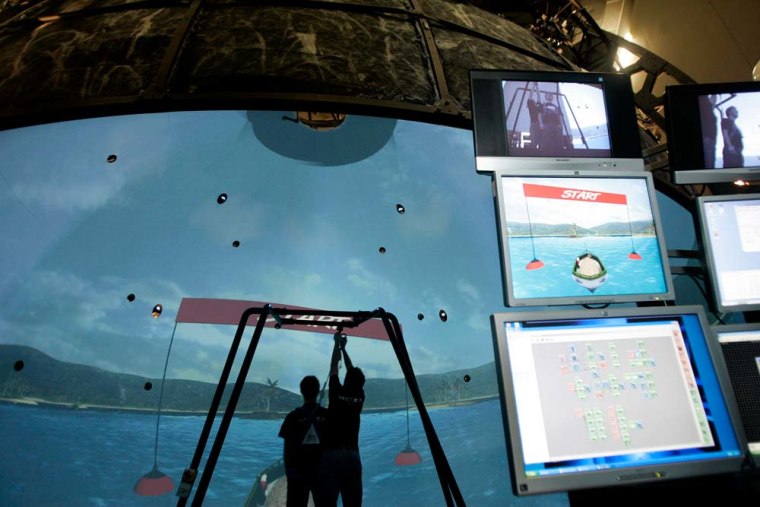Of the roughly 20,000 soldiers injured since the start of the Iraq war, more than 500 have lost a limb — many of them in roadside bombings.
On Monday, a $50 million high-tech rehabilitation center opened that is designed to serve the growing number of soldiers who return from war as amputees or with severe burns.
The 60,000-square-foot Center for the Intrepid will allow the Army to move its rehabilitation program out of the Brooke Army Medical Center and into a separate facility.
“The Center for the Intrepid is going to let us keep advancing what we’ve been doing,” said Maj. Stewart Campbell, the officer-in-charge of rehabilitation at Brooke.
'As long as you need us'
The facility tells soldiers “we’re going to take care of you for as long as you need us, to get you back to where you want to be,” he said.
At Brooke, amputees were being treated in offices and facilities carved out of the larger hospital. The new facility includes a rock-climbing wall, wave pool and a 360-degree virtual reality sphere to help soldiers recover their balance and other basic skills.
The center was officially dedicated at a ceremony Monday. Sens. John McCain, R-Ariz., and Hillary Rodham Clinton, D-N.Y., both 2008 presidential hopefuls, attended.
Brooke’s amputee program started two years ago and has about 50 patients, but the new center will allow it to expand and offer more advanced rehabilitation, Campbell said.
Prior to the Iraq war, amputees were generally given acute care by the military and then turned over the Department of Veterans Affairs, said retired Col. Rebecca Hooper, program manager for the Center for the Intrepid. But since 2003, the military has kept those patients and made rehabilitation part of its mission.
Amputee rehab programs are now being run at Brooke, Walter Reed Medical Center and Bethesda Naval Medical Center.
Because the new Center for the Intrepid offers high-tech equipment and better facilities for severely injured soldiers, Hooper expects it to become a magnet for advanced amputee rehabilitation.
Private donations
The center was funded by private donations to the Intrepid Foundation, a charity that has built dozens of houses to shelter families of wounded soldiers while they undergo treatment.
As part of the construction at Fort Sam Houston, two new houses have been added to two already there so that additional families could be housed near the center.
Staff Sgt. Jon Arnold-Garcia, who lost part of a leg in a grenade attack, got his first look at the rehab center on Sunday.
“This place is amazing, that the American people donated the money for this,” said the 28-year-old from Sacramento, Calif.
Arnold-Garcia has been in rehabilitation at Brooke since May, but he was anxious to get to work at the Center for the Intrepid, a four-story glass building decorated with art and modern decor.
Arnold-Garcia and other amputees have been eyeing the rock climbing wall, visible through the glass. They have also heard about the wave pool, in which they can use wake boards to strengthen their back and stomach muscles.
“It doesn’t look like a hospital,” Arnold-Garcia said, sitting in the center’s cafe. “It’s a place I can see myself getting up and being motivated instead of walking hospital hallways with doctors.”
